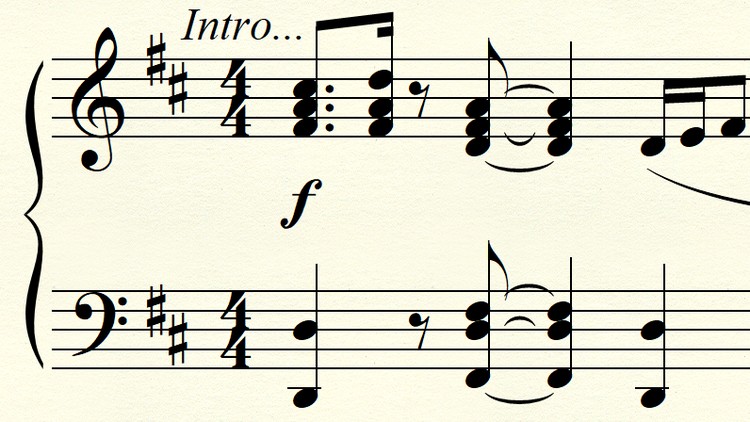
How To Learn Music As A Foreign Language?
What you will learn
learn and understand the essential elements of my approach to practice.
readily recognize and identify the different music symbols as the basic foundation in learning music as a foreign language.
learn and understand the five most common types of music notes and rests with their corresponding values.
read and remember the notes on both the treble and bass musical staves.
learn and understand the main function of the grand staff and the leger lines.
learn and understand the basic use and the different types of bar lines and repeat signs.
learn more about how to count the eighth notes and how to group them together
learn and practice the three simple time signatures most commonly used in music.
learn and understand dotted notes, lead-in notes, staccato, legato and ties.
learn and understand the basic components and properties that make musical notes sound pleasing to the ear including dynamics of touch, volume and tempo.
Description
Introduction to Music Symbols (Grade 1, Level 1) covers the most common symbols and signs used in learning music as a foreign language. The course runs for 1 hour presented as recorded PowerPoint slides covering 10 Sections.
Section 1 answers three very common questions, namely: 1) Why Is Music A Foreign Language?; 2) What Is The Right Approach To Practice?; and 3) How To Maximize Your Learning?
From Section 2 to Section 10, you will be learning the different musical symbols and signs, starting from the musical alphabet, to the musical staff, to the two kinds of clef, the grand staff and leger lines, the names of musical notes and musical rests, simple time signatures, understanding bars and bar lines, lead-in notes, first and second endings, dotted notes, ties, and slurs, and finally, the different dynamic markings and changes in touch, volume and tempo. A few short quizzes and exercises are given to enhance your learning and for actual illustration and demonstration of the lectures covered in the course.
At the end of the course, you shall be able to identify, recognize and understand the different basic musical symbols and signs in the Grade 1 Level but enough for you to start learning how to read music as a foreign language like a real good musician.
Content